Group Personal Accident Insurance
Get ₹50 Lakh Cover,
Starting At ₹7,000*/year
Quotes in seconds. Coverage in minutes.
Trusted by


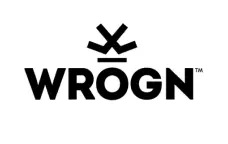
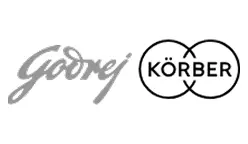
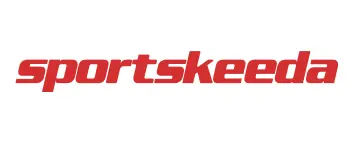

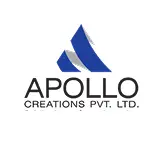
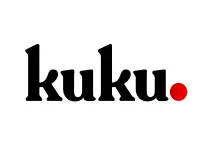
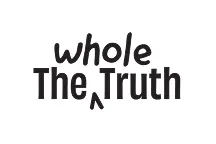
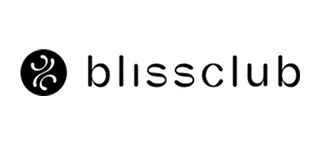










Policies Sold
on Google
Total Sum Insured
Group Personal Accident Insurance
Get ₹50 Lakh Cover,
Starting At ₹7,000*/year
Get Quotes in a Few Steps
Policy Provided by



Get ₹50 Lakh Cover,
Starting At ₹7,000*/year
Group Personal Accident Insurance
Protects employees from high medical costs due to accidents
WhyChoose BimaKavach?

Speed
Quotes in seconds, coverage in minutes!
Service
Dedicated support, quick replies!
Savings
Best prices, maximum savings!
Understand
Your Insurance
Before Buying
Group Personal Accident Insurance Made Easy
Click on any topic to see the answer.
To share a topic, click the link icon next to it.
Understand
Your Insurance
Before Buying
Group Personal Accident Insurance is an insurance plan that provides accident coverage for a large number of people, collectively referred to as a group. Group Accident Insurance provides coverage in case of unforeseen events. There are several other benefits that come with group personal accident insurance.
See More...Group Personal Accident Insurance is a simple and helpful policy that protects employees from the financial impact of accidents. It provides fixed payouts when an accident causes death, disability, or time away from work.
Group Personal Accident Insurance is usually employer-sponsored. It can be part of a group health plan or given as a separate benefit. Premiums are often paid fully by the employer. In some cases, a small part may be taken from the employee’s salary.
The claim process is also easy to follow. If an accident occurs, the employee informs the company’s HR department. HR contacts the insurer, who then shares the claim form. The claim is processed based on the rules set in the policy.
Here are some important features that make Group Personal Accident Insurance easy to manage and valuable for both employers and employees:
Twenty-Four-Hour Worldwide Cover
Employees are protected all day, every day, wherever they are. The cover applies whether they are on duty or off duty, in India or abroad.
No Medical Tests Needed
Insurers allow employers to add employees in bulk without asking for medical checks. This means the cover can start quickly, even for large teams.
Easy Add–Delete Process
HR teams simply upload a monthly list of new joiners and leavers. The insurer updates the cover accordingly by issuing an endorsement. This keeps the group list accurate with little effort.
Flexible Sum-Insured Method
Employers can choose how much coverage to give. They may set the same sum insured for everyone or link the amount to job level or salary. This helps balance protection with cost.
Group Personal Accident Insurance is more than just a benefit. It is a practical step that protects both the business and the people who run it every day. Here is why it matters to employers and employees alike:
Group Insurance Policy for Employers
Lower Financial Liability
If an accident occurs, the policy covers the cost of compensation. This means the company does not have to pay large, unexpected amounts from its own funds.
Better Employee Retention
Employees feel valued when their safety and family’s future are secured. This trust helps reduce staff turnover and cuts down hiring and training costs.
Higher Productivity
When employees feel safe and supported, they focus better on their work. This improves morale and increases overall performance.
Positive Brand Image
Offering accident cover shows that the company cares for its staff. This builds a responsible image, which can help attract both new clients and top talent.
Compliance Support
Some industries have safety cover guidelines from labour departments. A group policy shows that the company takes these rules seriously and acts in advance.
Bulk-Rate Savings
Buying accident insurance for a group costs less per person than giving individual policies or paying out-of-pocket claims.
Group Insurance Policy for Employees
Immediate Financial Protection
If an employee dies or becomes disabled due to an accident, the policy pays a lump sum. This amount helps the family manage living expenses, EMIs, and education costs.
Income Continuity
If an employee is temporarily unable to work, the policy pays weekly benefits. This keeps the household running until recovery.
Cashless Treatment Access
Many policies allow treatment at network hospitals without upfront payment. This reduces stress during medical emergencies.
No Medical Tests or Waiting Periods
The cover starts from the first day of employment. Even people with existing health conditions are protected without any delays or checks.
Peace of Mind
Knowing that an accident will not push the family into debt helps reduce daily stress and worry.
Equal Protection for All Grades
The policy gives basic cover to all employees, no matter their salary or job level. Everyone receives the same level of care in case of an accident.
Group Personal Accident Insurance is a smart choice for any organisation that cares for its people and wants to reduce financial risk. Group Personal Accident Insurance is suitable for all types of employers, across industries and sizes.
Businesses of Every Size
Micro, Small, and Medium Enterprises (MSMEs) benefit from GPA as it protects them from sudden compensation payouts that they may not be able to manage. Large companies use it to strengthen their employee benefits and show their commitment to staff welfare.
High-Risk Industries
Sectors such as construction, manufacturing, mining, logistics, oil and gas, power utilities, and agriculture involve frequent exposure to travel, machinery, or site work. These industries must protect their workforce from job-related accidents.
Service-Sector Employers with Mobile Staff
IT companies, sales teams, e-commerce platforms, courier services, banking agents, healthcare workers, and hospitality staff often travel for work. Road accidents and outdoor exposure increase their risk, making GPA essential.
Gig-Economy Platforms and Staffing Agencies
Cab aggregators, food delivery apps, and manpower suppliers can offer GPA to drivers and contract workers. This helps build loyalty and fills a key protection gap for temporary staff.
Educational Institutions and Training Centres
Schools, colleges, coaching classes, and vocational centres can use GPA to protect students, teachers, and staff during lab work, sports events, industrial visits, or trips.
Clubs, Associations, and Societies
Resident welfare associations, sports clubs, trade groups, and professional bodies can arrange group cover for their members. Pooling risk makes the policy affordable and inclusive.
Government Departments and Public-Sector Units
Central, state, and local authorities with field staff—such as police, health inspectors, or sanitation workers—use GPA to meet welfare standards and provide protection on duty.
Non-Governmental Organisations (NGOs) and Charities
Field volunteers, social workers, and medical teams often serve in remote or risky areas. GPA offers financial protection to them and peace of mind to the organisation.
Start-Ups Offering Modern Benefits
New-age companies in tech, D2C, and services can add GPA to their benefit plans. It adds value along with health insurance and stock options, helping attract and retain talent.
Any Employer Seeking Goodwill and Compliance Support
Even when not required by law, GPA shows the company takes its duty of care seriously. It builds goodwill, improves retention, and protects against sudden financial loss from accidents.
Group Personal Accident Insurance can be set up in different ways to match your team’s structure, risk level, and budget. Below are the main plan types with their features, practical benefits, and simple examples to help you understand how each works in real life.
Standard 24×7 Employer-Paid Plan
Key Features
- One master Group Personal Accident Insurance Policy covers all employees in the organisation
- Provides accident protection round the clock—whether on duty or off duty, in India or abroad
- No health checks are required; employees are added using a monthly HR census
Practical Benefits
- Staff are protected at all times, even during holidays or outside work hours
- Supports audit readiness and brand image as a responsible employer
- Easy to manage for HR, with minimal ongoing administration
Example
- A logistics company in Chennai covers its 150 drivers under a 24×7 GPA plan. One driver met with a road accident on a Sunday while visiting family. The policy covered his hospitalisation costs and paid a weekly income for the month he was unable to work—because the cover applied beyond working hours.
Salary-Linked Sum-Insured Plan
Key Features
- Each employee’s sum insured is calculated as a fixed multiple of their monthly salary or CTC
- As salaries increase, the sum insured also updates automatically
- Ensures cover stays proportionate to financial responsibility
Practical Benefits
- Senior staff and high earners receive adequate protection
- Finance teams do not need to recalculate manually during salary revisions
- Promotes fairness and transparency within the workforce
Example
- An IT company in Pune links GPA coverage to 3 times the basic salary. An employee earning ₹50,000 per month is insured for ₹1.5 lakh, while one earning ₹1 lakh gets ₹3 lakh. When salaries are revised during appraisal, the insurance coverage adjusts automatically.
Flat Sum-Insured Plan
Key Features
- All employees, regardless of grade or role, receive the same lump-sum cover
- Simple to implement and explain, especially in teams with wide role diversity
- Fixed premium costs make budgeting easy
Practical Benefits
- Promotes equality across staff levels
- Suitable for Tier 2 and Tier 3 teams who may prefer simple explanations
- Helps with straightforward HR communication and predictable cost planning
Example
- A textile factory in Surat covers all 70 workers and office staff with a flat GPA cover of ₹2 lakh each. Whether it is a floor supervisor or a helper, every employee receives the same accident protection, creating a sense of equal value.
On-Duty-Only (Restricted-Hours) Plan
Key Features
- Covers accidents that happen only during working hours or authorised work travel
- Typically 20–25 percent cheaper than full-time 24×7 plans
- Often selected by MSMEs looking to stay within a tight budget
Practical Benefits
- Provides basic accident protection during job-related activities
- Meets workplace safety standards for labour inspections
- Reduces overall premium cost without eliminating cover entirely
Example
- A small engineering workshop in Ludhiana takes a GPA Policy that applies only during working hours. One technician injured his arm while operating machinery. Since the accident happened on duty, the policy paid for treatment and recovery time, while keeping premiums low for the business.
Micro-Group Plan (5 to 10 Members)
Key Features
- Designed for small teams with as few as five people
- Fast, online setup with basic proposal details
- Policy is filed under IRDAI-approved micro group regulations
Practical Benefits
- Even the smallest groups, like tuition centres or event teams, can access accident insurance
- Low documentation and easy enrolment process
- Access to discounted group rates that are more affordable than retail individual plans
Example
- A photography studio in Jaipur insures its team of six under a Micro-Group GPA plan. During a destination shoot, one staff member slips and fractures a leg. The policy covers hospital bills, despite the small team size, and costs less than buying individual covers for each member.
A Group Personal Accident Insurance Policy provides financial help when an employee is injured, becomes disabled, or dies due to an accident. It is a safety net that protects the employee and their family from sudden expenses. Most plans offer round-the-clock protection—365 days a year, 24 hours a day—whether the accident happens at work, at home, or while travelling.
Core Coverages
Accidental Injuries and Death
If an insured employee dies in an accident, the nominee receives a fixed lump-sum amount. If the employee survives with serious injury, the policy offers compensation based on the type of disability. This payment supports the family and reduces financial stress.
Example: A warehouse supervisor in Nagpur met with a fatal road accident while travelling back from work. His family received ₹10 lakh from the group policy. This amount helped them cover daily expenses and continue loan repayments without falling into debt.
Disabilities Occurring Due to Accidents
The policy provides different payouts depending on the severity of the injury:
- Permanent Total Disability (PTD): If the employee loses both eyes, both hands, or is unable to work again, the full sum insured is paid.
- Permanent Partial Disability (PPD): If a body part such as one arm or one eye is lost, a percentage of the sum insured is paid.
- Temporary Total Disability (TTD): If the employee is unable to work for some time, the policy pays a weekly income during the recovery period.
Example: A construction worker in Kochi fell from scaffolding and lost the use of one leg. The insurer paid ₹4 lakh under the permanent partial disability benefit, helping him with treatment and living expenses while he adjusted to a new routine.
365 × 24 × 7 Accidental Coverage
The policy offers full-time cover—on duty or off duty, in India or abroad. Whether the employee is working, travelling, resting, or on leave, the policy remains active.
Example: An employee of a Mumbai-based tech firm suffered injuries in a hiking accident during a weekend trip. Since the GPA Policy offered 24×7 coverage, his medical treatment was fully covered, even though the incident happened outside work hours.
Added Benefits
Medical Expenses
Some policies include coverage for hospital bills, medical treatment, surgeries, and rehabilitation linked to the accident. This ensures the employee does not have to pay large amounts from personal savings during emergencies.
Example: An employee at a food delivery company in Indore was hit by a vehicle while on duty. The GPA Policy covered his ₹1.2 lakh hospital bill, including surgery and a short hospital stay, without burdening his family.
Funeral Expenses
If an accident leads to death, the insurer reimburses the cost of transporting the body and funeral-related expenses. This reduces the emotional and financial strain on the family during a difficult time.
Example: An electrician working for a facility management company in Bhopal died in an electrical short-circuit accident. The policy paid ₹25,000 to cover funeral arrangements and the cost of repatriating the body to his village.
Child’s Education Benefit
In case of death or permanent disability, some policies pay an extra lump sum for the education of the employee’s dependent children. This ensures that the children’s schooling continues without interruption.
Example: A delivery rider in Bengaluru became permanently disabled after an accident. His company’s group policy provided ₹50,000 per child to help support their education.
Ambulance Services
Emergency ambulance charges are often included in the cover. The insurer reimburses the cost of transporting the injured employee to the nearest hospital.
Example: A factory worker in Nashik was injured in a fall and taken to hospital in a private ambulance. The insurer reimbursed the ₹4,000 ambulance fee in full.
Fractures and Burns
Some GPA policies pay a fixed amount for specific non-fatal injuries such as bone fractures, burns, or dislocations. These injuries may not cause disability but still need treatment and rest.
Example: A hotel cleaner in Jaipur slipped and fractured her wrist. The policy paid ₹10,000 as a fixed benefit, which helped her manage treatment costs and wage loss during recovery.
Home or Vehicle Modification
In case of permanent disability, some insurers cover the cost of modifying the employee’s home or vehicle to make them accessible and safe.
Example: An office assistant in Ahmedabad lost his ability to walk after a serious road accident. The insurer paid ₹60,000 to help fit hand controls in his scooter and install railings at home.
Group Personal Accident Insurance offers strong protection, but it does not cover every situation. Certain events and circumstances are excluded from the policy. These exclusions are common across most insurers and are clearly listed in the policy terms.
Understanding what is not covered helps employers and employees avoid false expectations and claim disputes.
Illness or Natural (Non-Accidental) Death
The policy only pays when death or injury is caused by a sudden, external, and visible accident. It does not cover death due to illness, disease, or natural causes such as a heart attack.
Example: An employee at a factory in Hyderabad passed away in his sleep due to a stroke. As there was no accident involved, the insurer did not pay the claim under the Group Accident Policy.
Suicide or Intentional Self-Injury
If the injury or death is the result of self-harm or suicide, the claim is excluded. The insurer does not cover deliberate acts that cause harm to oneself.
Example: An office employee in Delhi was hospitalised after an intentional overdose. Since the injury was self-inflicted, the Group Personal Accident Insurance claim was rejected.
Accidents Under the Influence of Alcohol or Drugs
If the insured person is under the influence of alcohol, drugs, or banned substances at the time of the accident, the policy does not provide any benefit.
Example: A marketing executive in Pune met with a bike accident while riding under the influence of alcohol. The insurer denied the Group Personal Accident Insurance claim after the hospital report showed alcohol in his system.
War, Civil Unrest, or Terrorism (Including Nuclear, Chemical, or Biological Weapons)
Standard GPA policies do not cover events related to war, riots, rebellion, or terrorist attacks. Injuries caused by nuclear or chemical exposure are also excluded.
Example: A security guard was injured during a violent protest outside a government building in Kolkata. As the situation was linked to civil unrest, the Group Personal Accident Insurance claim was not payable under the Group Accident Policy.
Hazardous or Adventure Sports, Racing, or Non-Commercial Aviation
Accidents during high-risk activities such as skydiving, paragliding, motor racing, or flying as a non-paying passenger in a private aircraft are not covered—unless the employer has added special coverage.
Example: An employee from a travel agency in Manali went bungee jumping during a weekend trip and suffered a spinal injury. Since the activity was classified as hazardous, the Group Personal Accident Insurance Policy did not cover it.
Criminal or Illegal Acts
If the employee is injured while committing a crime or participating in any illegal activity, the policy excludes the claim.
Example: A delivery agent in Bengaluru was involved in a road accident while evading police during an unauthorised late-night delivery. As the act was against company policy and considered unlawful, the insurer declined the Group Personal Accident Insurance claim.
Pre-Existing Disabilities or Diseases
If an existing medical condition contributes to the injury or worsens the outcome, the claim may be denied. Group Personal Accident Insurance is designed to cover new and sudden accidents—not complications from old issues.
Example: A worker in Indore slipped at the workplace. However, the hospital report stated that a prior leg condition had worsened the fall. The insurer paid only for the fresh injury and denied the rest related to the pre-existing condition.
Pregnancy, Childbirth, or Related Medical Complications
Any accident or medical emergency that arises from pregnancy, childbirth, miscarriage, or abortion is excluded. These are considered medical issues, not accidental events.
Example: A receptionist in a Mumbai clinic was admitted for pregnancy-related complications. Even though the situation was sudden, the insurer did not pay, as the Group Personal Accident Insurance Policy does not cover maternity-related issues.
Ionising Radiation or Nuclear Contamination
Exposure to nuclear radiation or radioactive materials is not covered. These risks are typically handled by government disaster funds or special policies.
Example: A worker at a scientific lab in Gujarat developed radiation-related illness after an accidental exposure. The Group Personal Accident Insurance claim was not admitted, since such events fall outside the policy’s scope.
To issue a Group Personal Accident Insurance Policy, insurers require a few basic documents from the employer. These help verify the company’s identity, structure, employee information, and payment records. The process is straightforward, and most documents can be submitted digitally.
1. Company Registration Proof
Any valid document confirming the legal status of the business:
- GST registration certificate
- Shops and Establishment licence
- MSME registration
- CIN from the Ministry of Corporate Affairs (MCA)
Why it is needed
To confirm that the employer is a registered business eligible for group insurance.
2. PAN Card and Premium-Payment Proof
Insurers always ask for the company’s PAN and a receipt or transaction record of the premium payment.
Why it is needed
For tax compliance and to initiate policy processing after payment.
3. Employee List with Details
A census in Excel format, including:
- Full name
- Gender
- Date of birth
- Employee ID or code
- Designation or job role
- Monthly salary or CTC
- Work location
Why it is needed
To enrol members, fix coverage levels, and calculate the total premium—especially for salary-linked plans.
4. Claim or Loss History (if available)
Details of previous accident claims or GPA losses made under any earlier policy.
Why it is needed
To help the insurer assess risk and decide on pricing or coverage terms.
5. Occupation Split (usually requested)
A breakdown of the employee group by job role—such as drivers, site workers, sales staff, and office workers.
Why it is needed
To apply the correct premium rates and assess risk across different job categories.
6. Address Proof of the Company
Only required if the KYC documents provided earlier do not clearly show the current business address. Accepted documents include utility bills, rental agreements, or trade licences.
Why it is needed
For accurate policy documentation and communication, if not already covered under KYC.
7. Board Resolution or Authorisation Letter (if applicable)
Needed only if the policy is being managed by a third-party HR firm or consultant.
Why it is needed
To confirm that the person handling the insurance has been authorised by the employer.
8. Past Policy Copy (if renewing or switching insurer)
Required if the company is continuing or migrating an existing GPA Policy.
Why it is needed
To ensure continuity of cover and reference for matching existing terms or claim history.
9. Proposal Form
A standard form provided by the insurer that includes policy details, sum insured, coverage options, and declarations.
Why it is needed
To formally request and activate the group policy.
When an employee becomes disabled due to an accident, the insurer requires specific documents to process the claim. These documents confirm the accident, establish the type of disability, and help the insurer calculate the eligible payout. The documents listed below are commonly required for all types of disability claims—whether it is temporary total, permanent partial, or permanent total disablement.
1. Incident or Accident Report
A written report prepared by the employer or safety officer describing how, when, and where the accident occurred.
- For road accidents or public-place injuries, a Police FIR or medico-legal certificate (MLC) must also be submitted.
Why it is needed
To confirm that the event qualifies as an accidental injury under the policy.
2. Medical Reports and Treating Doctor’s Certificate
Includes admission records, X-rays, MRI or CT scan results, discharge summary, and a certificate from the attending doctor stating:
- The nature and cause of the injury
- The extent of disability
- Recovery timeline or confirmation of permanent damage
Why it is needed
To validate the claim medically and confirm whether the disability is total, partial, or temporary.
3. Disability Certificate
Issued by a registered medical practitioner or authorised government doctor. It must clearly state the type and percentage of disablement.
Why it is needed
To grade the injury (TTD, PPD, or PTD) and support the claim amount calculation.
4. Basic KYC Documents and Policy Copy
Submit the following:
- A government-issued photo ID (such as Aadhaar, PAN, or Voter ID)
- A copy of the active GPA Policy
Why it is needed
To establish identity and confirm that the employee was covered at the time of the accident.
5. Employee ID and Salary Proof
Submit the following:
- Official employee ID card issued by the company
- Latest payslip or salary certificate
Why it is needed
To confirm that the claimant is part of the insured group and determine the sum insured, especially under salary-linked plans.
6. Leave Records or Attendance Statement (for Temporary Total Disablement only)
Shows the number of workdays missed due to the injury, usually issued by the HR or payroll department.
Why it is needed
To calculate weekly payouts during the recovery period.
7. Bank Account Details
Submit any one of the following:
- Cancelled cheque
- Bank passbook copy or account statement with account number and IFSC code
Why it is needed
To transfer the claim amount directly to the employee’s or nominee’s bank account.
Group Personal Accident Insurance claims can be done in two ways: Cashless or Reimbursement. Here is how each process works:
Cashless Claims Process for Group Personal Accident Insurance
Group Health Insurance makes hospitalisation easier by offering a cashless facility. This means you can get treated at a network hospital without paying the bill upfront. The insurance company will settle the approved amount directly with the hospital.
For Group Health Insurance, you can use the cashless facility at any hospital that is part of the insurer’s approved network. You only need to pay for non-medical items, as per the policy terms. For planned treatments, it is better to apply for cashless approval at least three days before admission.
However, there are a few steps you need to follow to make sure everything goes smoothly.
Submit Documents at the Hospital
Go to the hospital’s cashless desk and give them the following:
- Your insurance card
- Your employee ID
- A valid government ID (such as Aadhaar or PAN card)
Fill the Cashless Request Form
The form will ask for basic details such as:
- Insurance card number
- Employee code
- Policy number
- Your name and patient’s name
- Age and contact number
Doctor Completes Medical Details
The attending doctor will fill in the diagnosis, suggested treatment, estimated cost, and number of days of hospital stay. The hospital will then send this form to the insurance company for approval.
Approval from Insurer
The insurance company usually responds within three hours. The hospital will receive either an approval or a query via email or fax. If there is any delay, you can follow up with the hospital’s cashless helpdesk.
During Hospital Stay
If the doctor advises you to stay longer than planned, inform the hospital’s cashless team. They will request additional approval from the insurer.
At the Time of Discharge
When treatment is complete, the hospital will prepare the final bill and send it to the insurance company. The insurer will directly pay the approved amount to the hospital. You only need to settle charges that are not covered under the policy, such as registration fees or non-medical items.
Reimbursement Claims Process for Group Personal Accident Insurance
If the hospital is not part of the insurer’s network, or if you choose to pay upfront and get reimbursed later, you can still claim the medical expenses through the reimbursement process. Here is how to go about it step by step:
Step 1: Intimation of Hospitalisation
You must inform BimaKavach within 24 hours of admission. If it is a planned hospital visit, you can also give advance intimation before admission. This can be done through the BimaKavach portal or by sending an email to claims@bimakavach.com, with your HR in copy (cc).
- Employee Name
- Employee Code
- Company Name
- Patient Name
- Relationship with the Patient
- Reason for Admission
- Date of Admission
- Hospital Name
- Hospital Address
- Approximate Claim Amount
Step 2: Submit Claim Documents After Discharge
After you are discharged from the hospital, you must submit all the required claim documents within 30 days. These documents will include your hospital bills, discharge summary, prescription, medical reports, and any other required proofs. BimaKavach will also send three reminders to make sure the documents are submitted on time.
Step 3: Claim Acknowledgement
Once your claim is received and registered, you will get an email confirming the same. This email will acknowledge receipt and confirm that the documents are under review.
Step 4: Claim Status Update
Within five working days, you will receive an update about your claim. The update will either confirm approval or request additional documents if something is missing or unclear. If any further information is needed, you will get a clear query mail. You will have seven days to submit the missing or extra documents.
Step 5: Claim Settlement
If everything is in order and your claim is approved, the approved amount will be credited to your bank account within seven to ten working days. You will also receive an email with the claim settlement details.
Step 6: Feedback Request
After the claim is settled, BimaKavach will send you a feedback email to understand your experience. This helps us improve our service and support other employees better in the future.
Fracture Claim for a Warehouse Assistant
In 2025, a logistics company in Indore faced a workplace incident where a warehouse assistant slipped while unloading goods. He fractured his right ankle and required hospitalisation and a plaster cast. The company’s Group Personal Accident Insurance covered the treatment and paid ₹30,000 for medical bills and follow-up visits. The assistant received weekly income for three weeks while he rested at home. He resumed duty without facing income loss.
Road Accident Claim for a Delivery Executive
In 2023, a food delivery platform in Nagpur reported an accident involving one of its delivery partners. The executive was hit by a car while on duty, suffering injuries to his shoulder and leg. The Group Personal Accident Policy paid ₹1.2 lakhs—covering hospitalisation, surgery, and physiotherapy. The insurer also paid for ambulance costs and daily hospital cash for four days. The financial support helped the rider recover fully and return to work with confidence.
Permanent Partial Disability Claim for a Site Engineer
In 2021, a construction firm in Ahmedabad had a site engineer injured during routine inspection. A fall from scaffolding resulted in permanent loss of mobility in one arm. Based on the disability percentage, the Group Personal Accident Insurance paid ₹5 lakhs under the permanent partial disability benefit. The policy also covered home modifications to support his condition. The engineer shifted to a planning role within the company, supported by both employer and insurer.
Real Review for Real Speed
Vishal Sharma
FounderAutopilot Design


Common Questions Answered
Common Questions Answered
Have questions or need to speak to an expert?
GPA, or Group Personal Accident Insurance, provides financial protection to a group of individuals against accidental injury, disability, or death. It is often offered to employees by their employer as a corporate benefit, offering a safety net for unexpected accidents.
Group Accident Insurance helps protect employees and their families from sudden financial hardship in case of accidental injury, disability, or death. It also supports employers by reducing out-of-pocket compensation liabilities and showing genuine care for staff welfare.
GPA in insurance stands for Group Personal Accident.
- Focus: GPA covers accidental injuries and death, while GMC (Group Mediclaim Cover) focuses on general medical expenses caused by illness or illness-related conditions.
- Scope: GMC has wider coverage, including illness, hospitalisation, pre-existing conditions, and maternity. GPA is specific to accidents, whether at work, home, or in transit.
- Premiums: Premiums for Group Personal Accident Insurance are lower because the risk is narrower and defined—accidents only. GMC costs more as it covers a broader range of healthcare needs.
Most insurers require a minimum of five employees to issue a group policy. For very small teams, a micro-group GPA plan may be available with simplified paperwork.
Have questions or need to speak to an expert?
Learn More About
Group Personal Accident Insurance
Ready To Buy
Business Insurance?
Join 4,000+ Indian businesses & protect your business today.